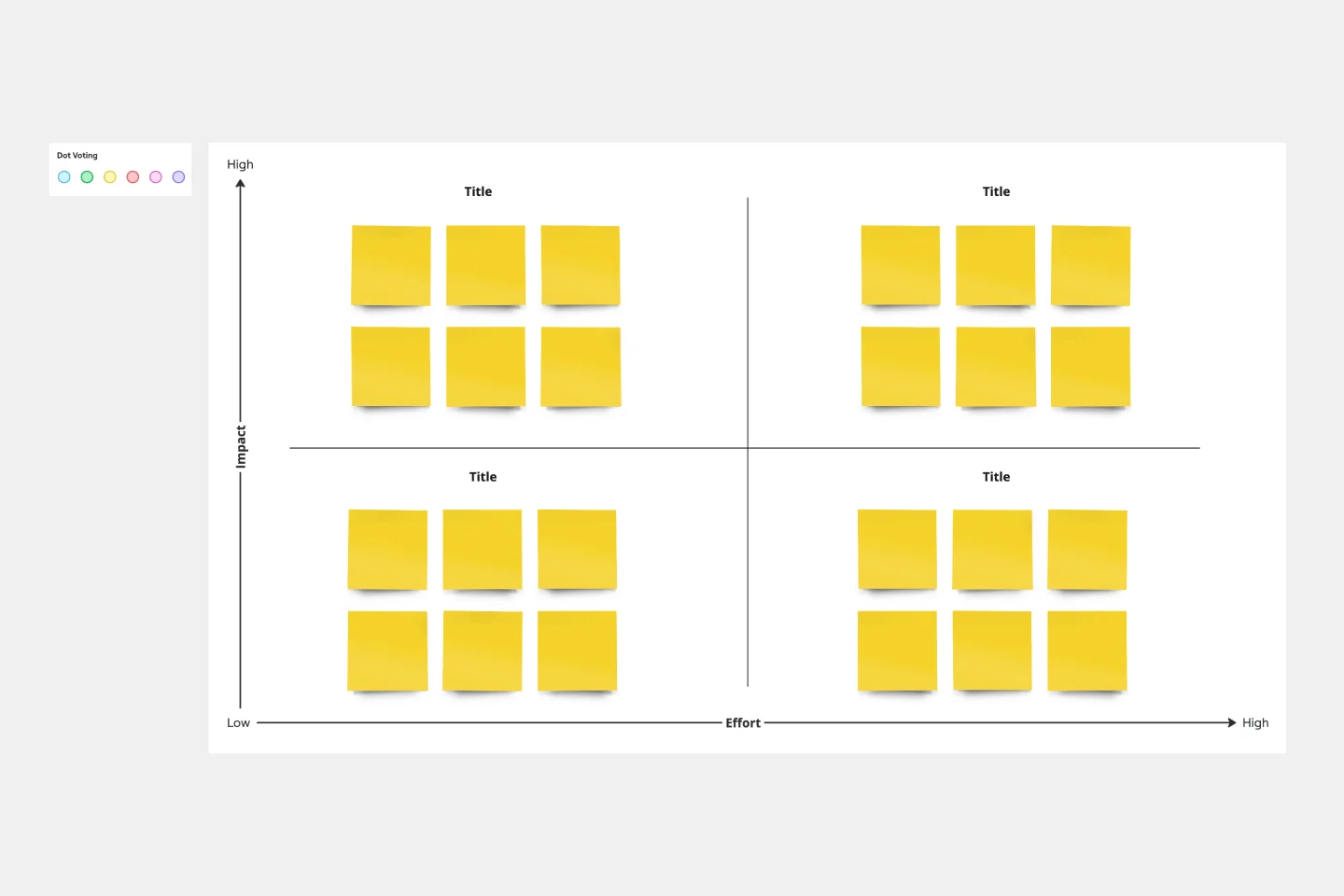About the How Now Wow matrix template
What is How Now Wow?
Brainstorming is difficult — but it becomes increasingly difficult as you scale. As you release more and more innovative products and services, it’s harder for your team to get creative. Complicated workflows, hard judgment calls, and resource constraints often force you to be conservative when you’d rather take risks. To overcome this challenge and reinvigorate your team, you can use the How Now Wow matrix.
The How Now Wow matrix is a game that fosters creativity. It consists of a 2x2 matrix with “originality” on the X-axis and “feasibility” on the Y-axis. You work with your team to file your ideas into each category. Working through the matrix can empower you to overcome creative roadblocks.
How do you use the How Now Wow matrix?
The horizontal axis represents originality and rates ideas as normal or innovative. The vertical axis represents ease of implementation and rates ideas as easy or difficult to implement. Ideas that are unoriginal and challenging probably aren’t worth pursuing. “How” ideas that are innovative but difficult to execute may need further work before you can act upon them. “Now” ideas are generally considered low-hanging fruit. “Wow” ideas are both innovative and relatively easy to implement, so this is where you’ll want to try to focus your attention.
The 3 Aspects of How Now Wow
How: Difficult to implement.
This category consists of ideas that are innovative but infeasible. It’s a helpful way to set ambitious goals for the future.
Now: Easy to implement.
These ideas are familiar, so you know they work well.
Wow: Original and easy to implement.
This category describes creative ideas that are relatively simple to execute. Try to file as many ideas into this category as possible.
Who can use the How Now Wow matrix?
The How Now Wow matrix is versatile enough to be used by any number of teams. Use it whenever you’d like to encourage your team to do creative brainstorming. In order to encourage maximum creativity, you may find it beneficial to break teams into smaller groups or let people brainstorm individually before sharing their ideas with a larger group.
Discover additional features like Miro's brainstorming tool.






